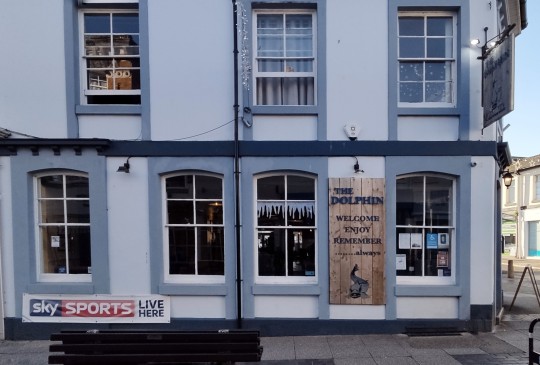#st marychurch
Text

Lickety Split is looking at the flowers - and meeting a friendly cat - in Tessier Gardens.
In St Marychurch, in Devon, England.
43 notes
·
View notes
Photo

This was quite large - about three feet across - and those are three ceramic plaques of Princess Diana and her children. It's one of the odder items of royal memorabilia I've seen.
In the Children's Society charity shop, in St Marychurch, in Devon, UK.
127 notes
·
View notes
Photo

Elliana of St Marychurch, Devon, England #AdultServe #AdultWork https://www.instagram.com/p/CgSljDLvUwl/?igshid=NGJjMDIxMWI=
0 notes
Photo

Great day out in St Marychurch and exploring the surrounding area. I had a nice catch up with some old friends. Nice to see the lovely crochet up and down the precinct for the platinum jubilee. But think it's time to take some of it down. #stmarychurch #torquay #shops #cafes #bakery #butchers #petshop #charityshops #tripdownmemorylane #crochet #platinumjubilee #british #memories #hoilday #friends #church #history #sunnyweather #trees #peaceful #devon #photography #exploring (at St Marychurch) https://www.instagram.com/p/CgM6ZTpsGAJ/?igshid=NGJjMDIxMWI=
#stmarychurch#torquay#shops#cafes#bakery#butchers#petshop#charityshops#tripdownmemorylane#crochet#platinumjubilee#british#memories#hoilday#friends#church#history#sunnyweather#trees#peaceful#devon#photography#exploring
0 notes
Text
My name is Andrew Lucas and I was born and grew up in the City of Salisbury, England. And, being surrounded by countryside and medieval architecture, my love of rural and urban spaces started from a young age. I found that art and drawing always came naturally and allowed me to express the way I felt about the world around me.
St. Marychurch, Torquay
The Tram Home
In my late teens, I began teaching myself how to paint in watercolour. This seemed a natural progression from drawing to me. With its unforgiving nature, it allowed me to forge a love, respect and passion for the medium and its difficulties early on. And through the early years of trial and error, I started to produce confident paintings.
Reflections
Woodland Path
I have worked in all mediums but found that watercolour was the most expressive for me and so the majority of my work is centered around it.
Towards East Gate Arch
Toward Parliament Square
In 2003, I held my first solo exhibition titled ” The Inspirational world ” in the Portico Gallery in Salisbury. This was a great success and was a crucial stepping stone, confirming my desire to become an artist and to share my passion for painting with the wider audience.
The Gatehouse, Torre Abbey, Torquay
Later that year, I relocated to Torquay in Devon, South West England where I still live and work today, painting new collections and pieces consisting of architectural studies, landscape, seascapes, as well as other subjects that may inspire me.
The Village Church
The Admiralty, Trafalgar Square
My technique for painting watercolour is very much in the traditional style of building up several washes. This can be a very time consuming way of painting, but I feel that the results offer freshness, structure and a sense of togetherness and belonging to the piece. After the initial body of washes have been applied, attention can be given to form, tone and details, as well as other techniques that will bind the painting together.
St. Paul’s Cathedral
Salisbury Cathedral
Regent Street, London
I have always followed the ideal of using the best materials that I can and that are available to me. I use both pan and tube watercolour paint, and I find both can be easily used and offer very good results. I currently use Winsor & Newton Professional series paint in both pans and tubes, as I find they offer the greatest luminosity and pigment qualities.
Morning Commute, Bristol Temple Meads
Morning Boats
I use all three types of watercolour paper, Hot pressed, Cold ” NOT ” surface and rough, with preference depending on the subject I am painting. I mainly use 300gsm/140lb weight as I find that this is heavy enough to cope with almost all subject demands. From the various papers that I use, a particular favourite is Daler-Rowney The Langton and Bockingford papers, both having excellent structure and quality allowing you to lay multiple washes without hindrance.
Estuary Sands
I also like to use I also use an acid free heavy weight cartridge paper which I find very good for working watercolour. It is, however, a very fast paper to work on in regard to paint flow and drying time and so you have to keep that in mind and work quickly. I use a mixture of synthetic and sable/natural brushes, including mops, riggers, flat and round profiles, with preference given to natural hair as it holds onto paint far better.
The synthetic brush at the same time is far more hard wearing and very good for certain applications where the sable brush would fail, and so is also a great asset to have within your brush collection and one that shouldn’t be disregarded.
Just In Time
Early Start On The Tram
I feel that drawing and planning are paramount to making a good painting, and so I will spend a good deal of time with the initial drawing before tackling the final piece. I find it is also very healthy to work in a more spontaneous manner, to just paint and leave planning to the moment. This method I also enjoy very much.
Krasnodar Winter
Charing Cross, London
I have great interest in architecture and relish in the challenge of a complicated structure to paint, this offers a great sense of achievement as the image must capture the soul of the building you are attempting to reproduce. I also have a great passion for landscapes and seascapes, and so many of my paintings have a reference to these also.
Harbour Bridge
High Street Gate, Salisbury
My aim through my artistry is to evoke real emotion and engage with as many people as I can through sharing my passion for painting and art. To build a lasting following of people who find a real sense of purpose, meaning, and passion through the work that I produce. Most of all, to let everybody enjoy the art as much as I enjoy making it, I hope you all enjoy the work.
Andrew Lucas
Doodlewash
Website
Facebook | Instagram | Google+ | Twitter
FineArt America | Redbubble | DeviantArt
GUEST ARTIST: "My World Through Watercolour" by Andrew Lucas - #WorldWatercolorMonth #doodlewash #watercolour #England My name is Andrew Lucas and I was born and grew up in the City of Salisbury, England.
#WorldWatercolorMonth#artist#doodlewash#drawing#England#featured#Landscape#landscapes#painting#UK#Urban Sketchers#Urban Sketching#watercolor#watercolour
1 note
·
View note
Photo

Man With a Van in St Marychurch #Home #Removal #Services #St #Marychurch https://t.co/yQCggClmMD
Man With a Van in St Marychurch #Home #Removal #Services #St #Marychurch https://t.co/yQCggClmMD
— Removal Companies (@ukofficemovers) October 30, 2020
0 notes
Photo

Synthetic Clay Tennis Surfacing in St Marychurch #Synthetic #Clay #Tennis #Courts #St #Marychurch https://t.co/ythBIf9kyM
Synthetic Clay Tennis Surfacing in St Marychurch #Synthetic #Clay #Tennis #Courts #St #Marychurch https://t.co/ythBIf9kyM
— ClayCourt Pro (@claycourtprouk) August 31, 2020
0 notes
Photo
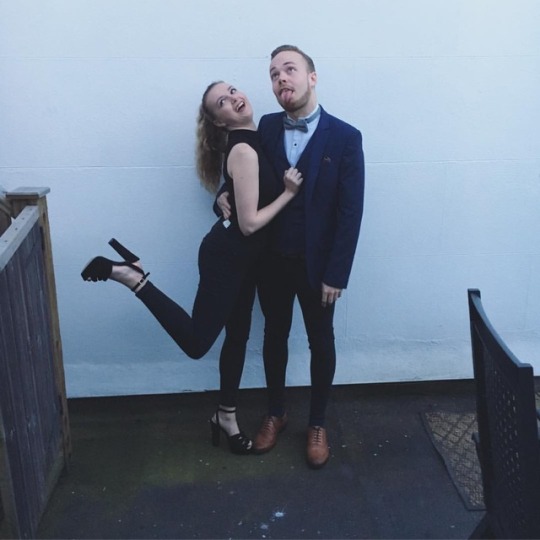
@ameliaapeterss thinks we're goals so we must be👌🏻 (at St Marychurch)
2 notes
·
View notes
Link
via Twitter https://twitter.com/adversecredituk
0 notes
Text
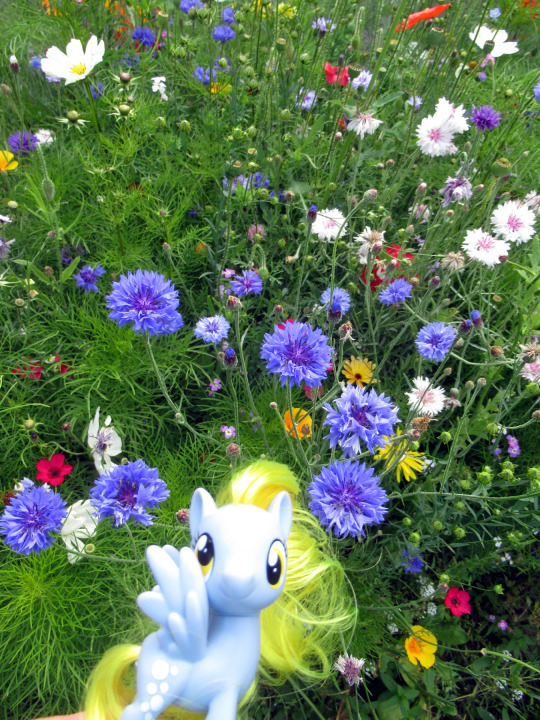
"Flowers!"
At Tessier Gardens, in St Marychurch, in Devon, England.
171 notes
·
View notes
Photo
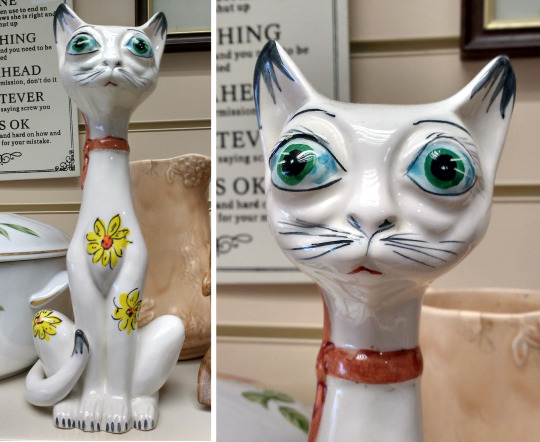
This tall china cat ornament looks… worried?
In the Barnados charity shop in St Marychurch, in Devon, UK.
449 notes
·
View notes
Text
Here’s a happy, joyous story; beatnik life at its very best!
One early autumn morning in September 1965 the postman delivered a letter to me at 60, Warren Road. Then, and for at least ten years afterwards ‘60’, as it was familiarly known, was the most notorious ‘beat’ pad I town.
Opening the letter I was surprised to learn that I’d been delegated to attend the Poetry Conference ‘representing the south west of England’. I was even more astonished at this out-of-the blue invitation as I’d only had a few poems published at that time (mainly in the ‘Tribune’ [a trades union newspaper/magazine] and in local newspapers.)
As one of these ‘local’ newspapers was the fortnightly Cardiff University newspaper ‘Broadsheet’, I reasoned that the invitation to the Conference must have some connection with that publication. And so, 22 years old, unemployed and homeless (I’d been sleeping on the floor at ‘60’) I used the last of my money (dubiously gained by selling ‘Afghan Black’ to summer beatniks in Torquay) and took a train to Cardiff.
On the face of it this invitation could very well have turned out to be the bore of the year, but in fact the week I spent in Cardiff at the Conference was one of the funniest, most bizarre, yet most rewarding experiences of my beatnik days.
Beat poetry at that time was fashionable, particularly if there was a musical element to accompany it. This accompaniment was often jazz based, but not necessarily so as folk musicians were also attracted to the poetry, for what is a poem if it is not a song?
Even so, the Conference was essentially respectable – or at least that was its intent – but within a short space of time two factions has formed: the squares and the beats.
Anyone who has had to endure squaredom will understand that the values it represents (especially in the mid-60s) are anaethema to, among other things, independent thought; after all what is ‘Torquay’s Other History’ than an expression of anti-squaredom. That the organisers of the Conference seemed unaware of this poetic/social dichotomy only added fuel to the flames of the events which were to follow.
There were two main venues for the organized events, which not only included readings but also plays (Dylan Thomas’s Under Milk Wood was a notable production), political ‘events’ and Cardiff Art College inspired ‘happenings’. The venues were well-appointed theatres to which the public were invited to attend.
There must have been considerable funds available (perhaps because the event was under the rather vague aegis of the ‘Commonwealth’), and the major poets (that is, the well-known ones) from all over the said Commonwealth were put up at the Park Hotel (now called ‘The Thistle’). Proletarian poets (that is, those that weren’t so well known or not known at all) were put up on camp beds in a nondescript church hall. My camp bed was comfortable enough.
The events, that is the notorious ones, have been described elsewhere (they can be found easily enough on Google), but some have not, particularly those which involved a more – shall we say – underground element.
The Cardiff Poetry Conference came hard on the heels of the equally notorious Albert Hall poetry bash which took place earlier that summer. The Albert Hall poetry fest was, in the main, taken over by the more radical beats and any semblance of organization had collapsed into a melee where competing poets pushed, shoved, and shouted in attempts to make themselves heard or, more likely, seen.
While the square organisers of the Cardiff were aware of the Albert Hall fiasco, they nevertheless made no attempt to ostracise the beats, as may be seen from the formal invitation I received from the M.D. of the Western Mail:
At this reception, beats, squares and 1965 style celebrities mingled happily. I enjoyed myself enormously: there was plenty to eat and drink and the pungent aroma of marijuana drifted around the room. Without knowing it, the squares were getting high!
During the evening I met among others, perhaps the greatest British beat novelist, Alexander Trocchi, whose novel Cain’s Book had gained an impressive number of admirers. But by far the most notorious character I met at the reception was a man who would, ten years later, be hanged for murder.
I meet Michael X
But surely, you will say, the last hangings in Britain occurred in 1964. Quite correct, but Michael X was hanged in Trinidad and Tobago which was a British colony.
I’ve never been sure why Michael X (Michael de Freitas) was at the Conference, perhaps it was because at that time he was making a name for himself as a Black Power leader.
‘Black Power’ at that time was a relatively new concept in Britain and was causing consternation among the establishment. The poets, though, were only too pleased to welcome him as a celebrity rather than as a poet.
If I recall correctly (and time is the enemy of memory) Michael X dominated the room and we were introduced to him as if to some passing member of royalty. I can’t recall if I said anything to him other than ‘hello, nice to meet you’ or words to that effect but, if nothing else, I can say that once I met a man who would later be hanged.
That night, though, there was considerable trouble at t’mill. Alexander Trocchi, with a delightful young lady accompanying him, had been given expensive quarters at the Park Hotel.
Trocchi, as was well known, was a long-time junkie and had brought with him quite a large amount of good quality ‘pharmaceutical’ heroin. You must remember that at that time, indeed, up to 1971, the prescription of heroin on the NHS was legal and, in consequence, it was not adulterated with unknown substances and was remarkable pure. I can vouch for this.
Heroin was often over-prescribed and so there was for many years a quantity that was surplus to requirements (as it were) and this surplus found its way onto the street.
After the reception, Trocchi and his companion had made their way to one of the venues (I forget which) where he was to read. I made my way there (I think it was one of the University theatres) and went back stage. Even the most minor and obscure poets, like me, who had been delegated to the Conference had an opportunity to read and this was my time.
Poetry and Jazz at the Palk Arms, St. Marychurch. Mike Williams and the Johnny Aris Trio.
Poetry and Jazz at the Palk Arms, St. Marychurch [2]. Mike Williams and the Johnny Aris Trio.
Poetry and Jazz at the Palk Arms, St. Marychurch [3]. Mike Williams and Max Eastley.
To my astonishment and delight I saw in the dressing room one of the greatest and most accomplished guitarists of the day: Davy Graham. If you are unaware of the importance of Davy Graham in contemporary culture, please look him up on Google or YouTube.
A poetry reading with Davy Graham
No doubt Davy Graham was to perform that evening but (I don’t know how it came about) when it was my turn to go on stage and read Davy Graham came on stage too.
Probably I had shown him the three poems I was to read and it seems possible that he liked them or certainly one of them, for my greatest memory of the whole occasion was reading with him.
I can only recall him accompanying me on one of my poems, and this is it:
Davy, improvising, began with a repetitive train riff (medium tempo)
One Way Ticket
Quick!
Here’s the train!
Have you got everything?
Your case? Your books?
Have you forgotten anything?
Your ticket? Your pass?
[The train, silent, stops.
Doors bang, windows scrape,
Mouths touch.
Hands part, green flag waves,
Whistle blows, the train moves.]
…….probably Davy took a solo here….
Have you got everything?
Have you forgotten anything?
Your toothbrush? Your comb?
[The engine leaves the platform,
The coaches leave the platform.
Mouths part, hands raise,
Heads and shoulders lean from windows,
The train moves away.]
Have you got everything?
Have you forgotten anything?
The milk? The rent?
Me?
As far as I remember the audience (square and beat) liked this. It was one of the great moments in my beatnik life. As for Davy Graham, that night he seduced Alexander Trocchi’s girl, went back with her to the Park Hotel, and later stole all his heroin and disappeared into the night.
From the Commonwealth Arts Festival to the Devonshire Hotel, Torquay.
After a few days of memorable chaos, laughter, excitement and joy the Conference came to an end. This is how beatnik life should be always, I thought: poetry, jazz, theatre, confounding the squares, meeting characters like Trocchi, X, and Graham. But, alas! Such intensity cannot last and I caught a train back to Torquay, as penniless as when I’d set out, and found myself a job as a waiter at the Devonshire Hotel, not far from Meadfoot Cross.
So you see beatnik life at its best could be exciting, fun, creative, intelligent, chaotic, joyful. If only it could have lasted!
A Torquay Beat poet at the Commonwealth Arts Festival Poetry Conference (Cardiff, 1965) Here's a happy, joyous story; beatnik life at its very best! One early autumn morning in September 1965 the postman delivered a letter to me at 60, Warren Road.
0 notes
Photo
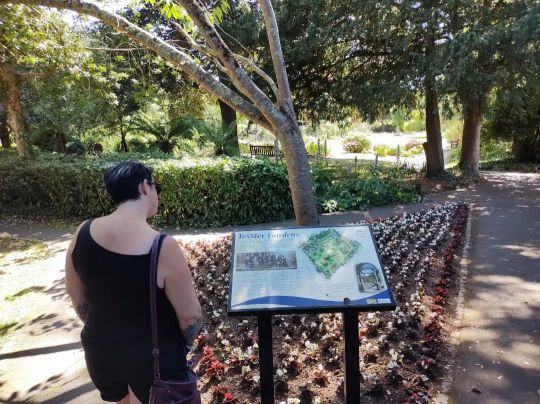
When I used to live in St Marychurch, I was always curious what these beautiful gardens looked like but it's for adults only, worth the wait. It gives that feeling of a secret garden. Hidden gem in Torquay! #tessiergardens #babbacombe #hidengem #flowers #trees #green #pond #beautifulday #peaceful #calm #community #memories #photography #hoilday #torquay #devon (at Tessier Gardens) https://www.instagram.com/p/CgIKtt8sSVU/?igshid=NGJjMDIxMWI=
#tessiergardens#babbacombe#hidengem#flowers#trees#green#pond#beautifulday#peaceful#calm#community#memories#photography#hoilday#torquay#devon
0 notes
Text
#Courier from St Marychurch St, #London
#Courier from St Marychurch St, #London
#Courier from St Marychurch St, #London SE16 4HW to #KingsLangley WD4 8FZ – Courier from St Marychurch St, London SE16 4HW to Kings Langley WD4 8FZ http://ow.ly/3TtX50gOeLH
View On WordPress
0 notes

